Running an animal sanctuary is a necessary, often backbreaking and emotionally draining, work that comes with a variety of everyday challenges. However, the animal residents—many of whom are rescued from factory farms—depend on smooth operations to get their needs met.
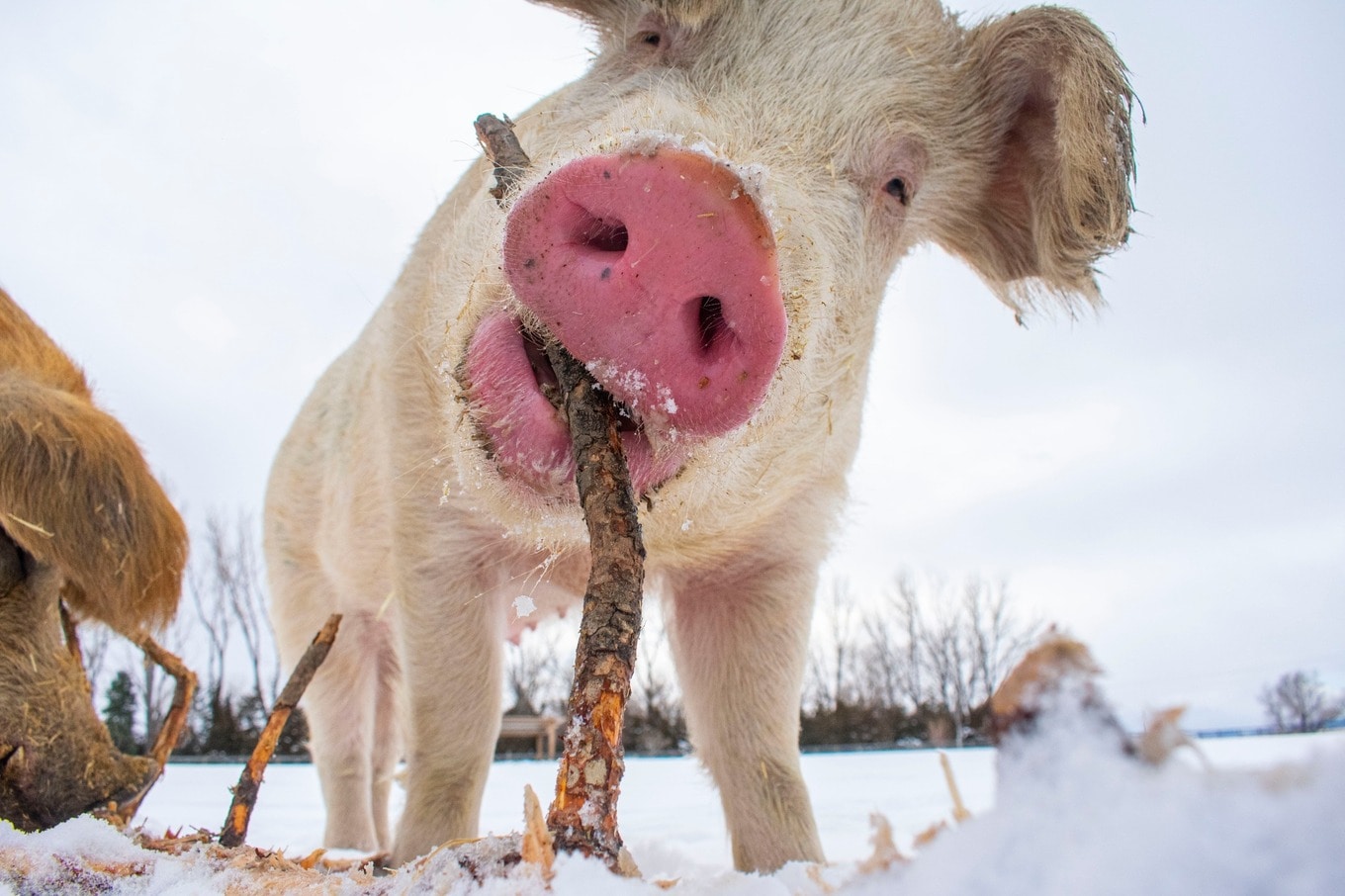 Luvin Arms Animal Sanctuary
Luvin Arms Animal Sanctuary
Sadly, during these economically challenging times, things have taken a turn for the worse at sanctuaries across the United States. As winter looms, these safe havens for rescued animals are grappling with the dual blows of reduced donations and increased operational costs.
During this difficult downturn, the fate of these animals and the people who care for them hangs in the balance. So how can we all help?
VegNews gathered insights from representatives from animal sanctuaries across the country to illuminate the most effective ways we all can offer support.
1Understand the economic strain
In operation for 22 years, Catskill Animal Sanctuary (CAS) in New York is feeling the brunt of the economic downturn.
“Our vehicles are falling apart, our roads need repair, and we’re not hiring for key positions like a volunteer coordinator—a role that would help keep staff costs in check,” CAS Founder Kathy Stevens tells VegNews.
The issues CAS has been facing this year have necessitated a shift in its fundraising focus from capital campaigns to covering basic needs. “We’re a fiscally disciplined organization, and when you’re suddenly not raising enough funds to carry out your mission but instead are dipping into a modest reserve account and watching it dwindle, it’s terrifying,” Stevens says.
This situation underscores the dilemma faced by many sanctuaries where essential yet “non-animal” expenses are being slashed, potentially impacting the overall welfare of the animals in the long term.
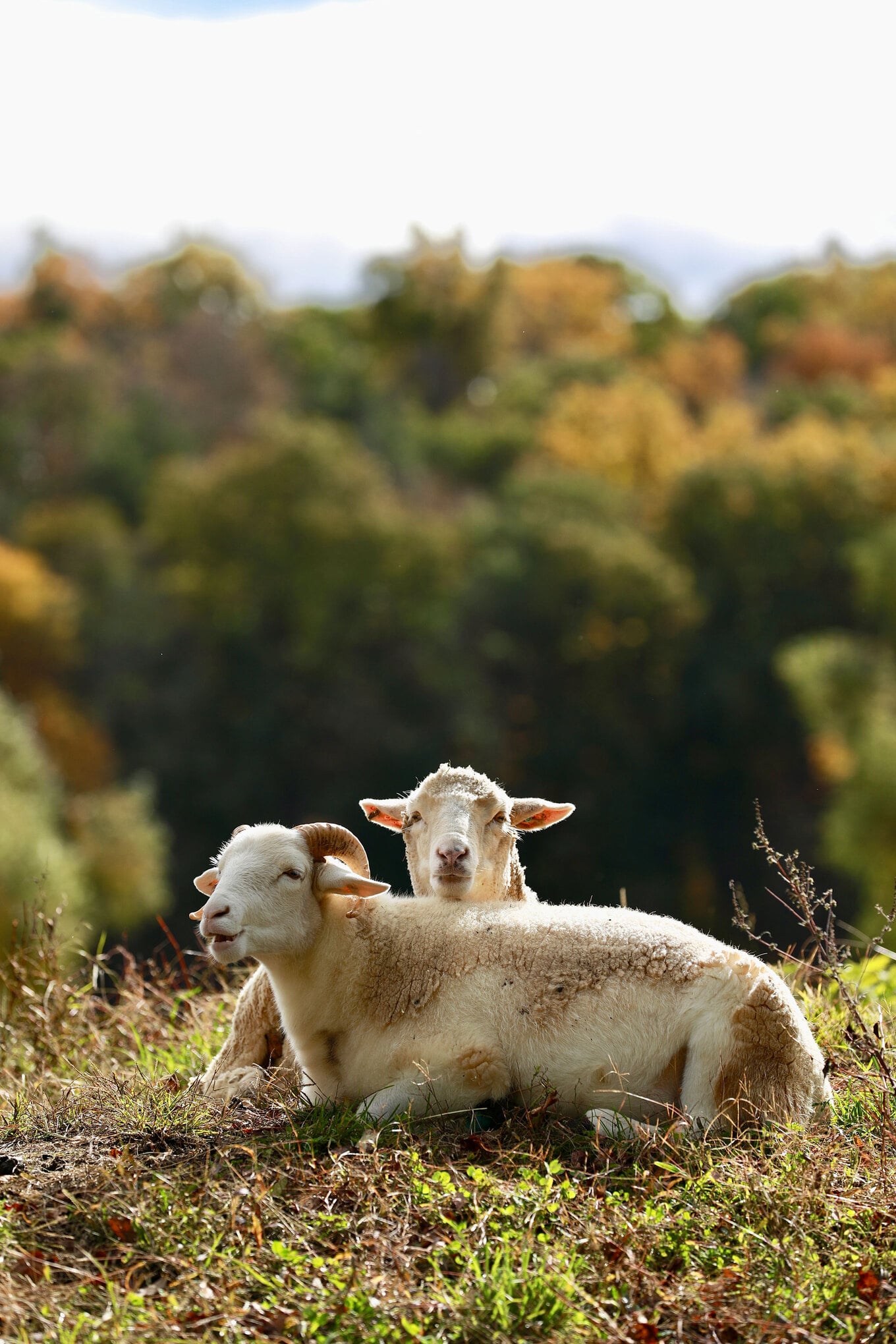 Catskill Animal Sanctuary
Catskill Animal Sanctuary
Due to similar conditions, Luvin Arms Animal Sanctuary in Colorado has been forced to downsize, which has strained the sanctuary’s ability to provide the comprehensive care it is known for. With a drop in half of its revenue since the onset of COVID-19, the sanctuary has made difficult choices, including letting go of paid staff members to continue providing for their animals, which includes 135 pigs.
“Critical funding shortages have led to the painful downsizing of over 50 percent of our dedicated staff and the suspension of several valued programs,” Kelly Nix, Luvin Arms’ Managing Director, tells VegNews.
2Recognize winter preparation challenges
Winter is a challenging time for many, and it is critical that proper equipment and preparations are in place for colder months. However, with the winter looming, sanctuaries are having a much harder time this year.
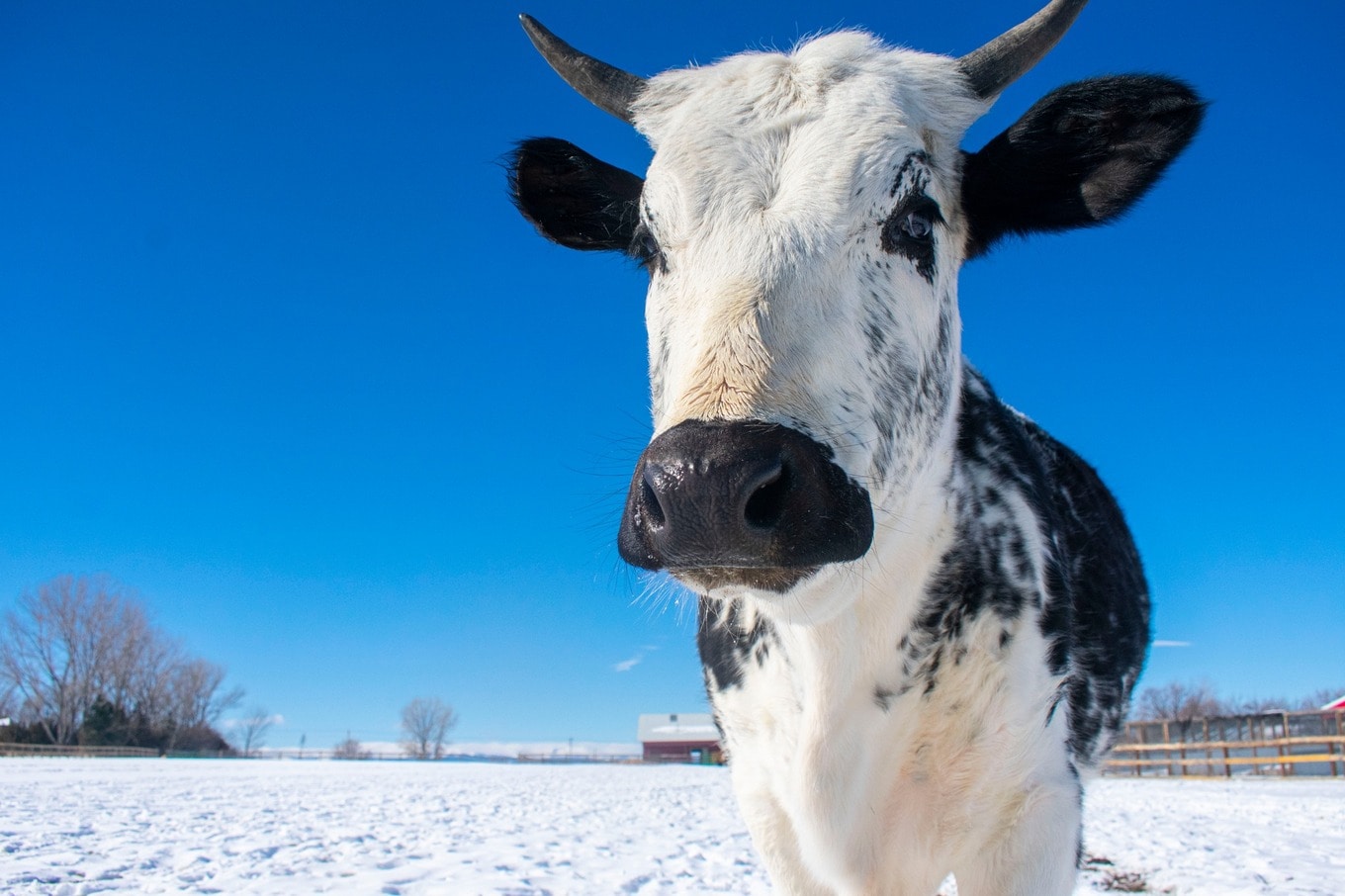 Luvin Arms Animal Sanctuary
Luvin Arms Animal Sanctuary
“Winter often includes severe ice storms, high winds, major tree damage, snowfalls of up to two feet or more, and prolonged power outages,” Stevens says. “So winter prep includes insulating buildings, checking roofs, generators, and heaters, and stocking our giant lofts from floor to ceiling because you never know when a snow or ice storm will delay a delivery of hay or straw.”
Among the CAS residents are 140 large animals such as cows, pigs, goats, sheep, and horses who consume more than 5,000 bales of hay in winter alone and need thousands of bales of straw for warmth.
Nearby at New York’s Woodstock Farm Sanctuary, Executive Director Rachel McCrystal further explains the daunting demands of winter.
“Logistics and planning for winter begins in early fall,” McCrystal tells VegNews. “Our nearly 400 resident animals require more bedding, hay, utilities to heat our over 15 coops and barns, and supportive care during the freezing cold months.”
The initial costs for these preparations exceed $80,000, a significant amount given the sanctuary’s commitment to elder animals and those with compromised immune systems, disabilities, and health conditions that make them more vulnerable to extreme weather.
3Acknowledge rising costs of care
The increased costs for hay, bedding, and veterinary expenses have also significantly impacted the budgets of sanctuaries.
“Our hay bill alone has increased by $40,000, and our veterinary expenses have included several costly stays at Cornell Veterinary Hospital for a desperately sick sheep rescued from a local backyard slaughter operation,” Stevens explains.
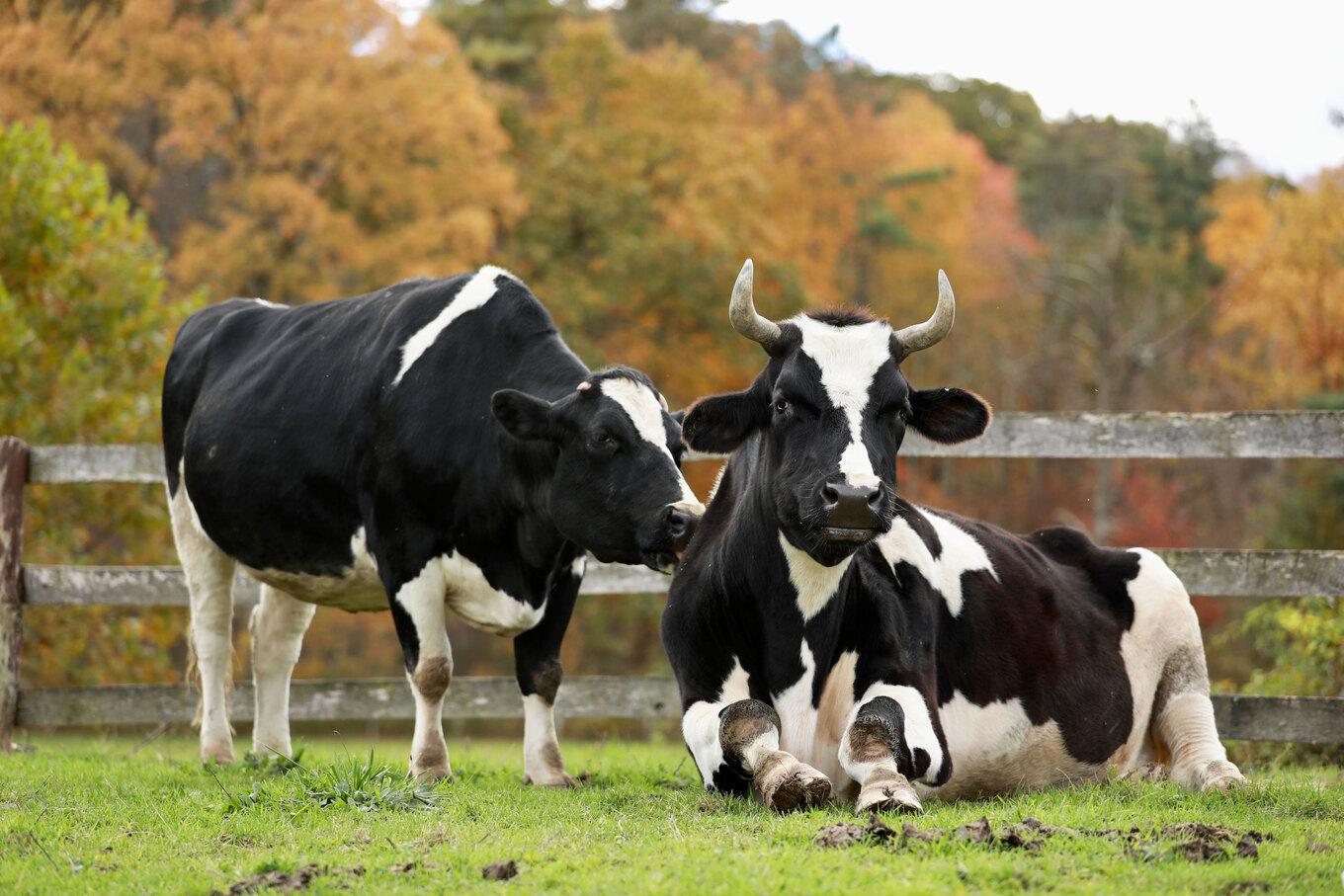 Catskill Animal Sanctuary
Catskill Animal Sanctuary
And these rising costs limit CAS’ ability to allocate funds to other necessary areas.
“These jumps in animal care costs leave no money for a transportation vehicle urgently needed to make those trips to the vet, nor for expansion on the education side of our mission,” Stevens says. “Additionally, we are not able to provide bonuses for modestly paid staff who give all that they have to these animals.”
At Iowa Farm Sanctuary, a vegan nonprofit operating in the middle of farm country where the goal is both rescuing animals and helping humans connect with them in meaningful ways, the situation is eerily similar.
“With the cost of everything skyrocketing … our hay costs alone have gone up $3 a bale,” Founder Shauna Sherick tells VegNews. “During the long winter months, we are feeding anywhere from 20 to 30 bales of hay every day—that’s nearly $3,000 a month.”
Indraloka Animal Sanctuary in Pennsylvania is feeling a similar budgeting pinch and reports a 40 percent increase in monthly expenses over the past year. Founder Indra Lahiri explains that a confounding issue is that the sanctuary wants to, but cannot afford to, pay its valued employees the salary they deserve amid the rise in the cost of living.
“When we lose a staff member the animals lose a beloved family member—someone who knows them, their favorite foods, how they like their bedding set up at night, who they want to spend their days with,” Lahiri says.
“Those relationships take time,” Lahiri says. “When we lose one, it’s like starting over.”
4Support through campaigns and donations
All animal sanctuaries accept donations year-round to stay afloat, and many rely on increased donations during the holiday giving season. However, this year, as donors themselves ride out the economic downturn, sanctuaries are not raising their much-needed donations.
Amid the donation dips, sanctuaries are also dealing with another issue: the growth of animal sanctuaries across the country. While more sanctuaries might sound like a good thing on the surface for farmed animals, it also means competition for donations and other issues, Christopher Vane, founder of Little Bear Sanctuary, explains.
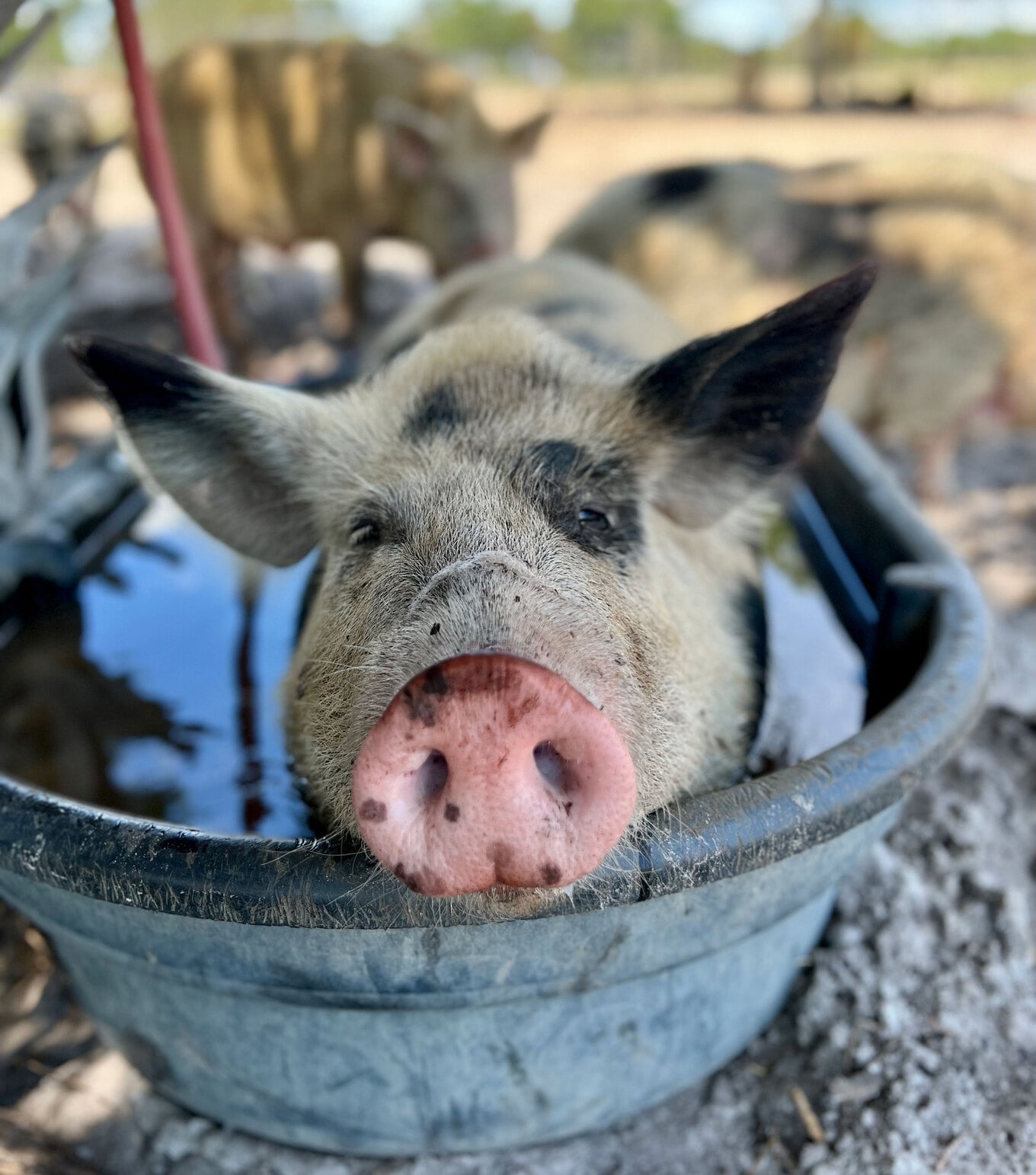 Little Bear Sanctuary
Little Bear Sanctuary
“Unless giving matches growth, we’re all in trouble, and right now, that’s not happening,” Vane tells VegNews. “The rise in sanctuaries is far outpacing donations to sanctuaries. At Little Bear, we’ve seen a 50 percent drop in donations in the last few years.”
At Piedmont Farm Animal Refuge in North Carolina founder Lenore Braford now provides lifelong care for 125 animals as a result of consolidating efforts with fellow sanctuaries experiencing hardships that they unfortunately could not overcome.
“We have taken in over a dozen animals in dire need of rescue from other sanctuaries forced to downsize or shut down completely due to financial burdens,” Braford tells VegNews.
“Rescues competing with one another for donations, increased costs of hay and other supplies, and the continued impacts of COVID-19 are all strains that sanctuaries are currently facing,” Braford says.
You can help directly support sanctuaries by making year-end donations or engaging in giving campaigns.
For instance, if you want to support a turkey instead of eating one this holiday season, Piedmont Refuge offers a one-time $25 donation option to support these intelligent birds during the holidays. Woodstock runs a similar campaign, with a $30 donation for a physical card—or $15 for a digital card—sent as a gift that tells recipients about your sponsored turkey’s story.
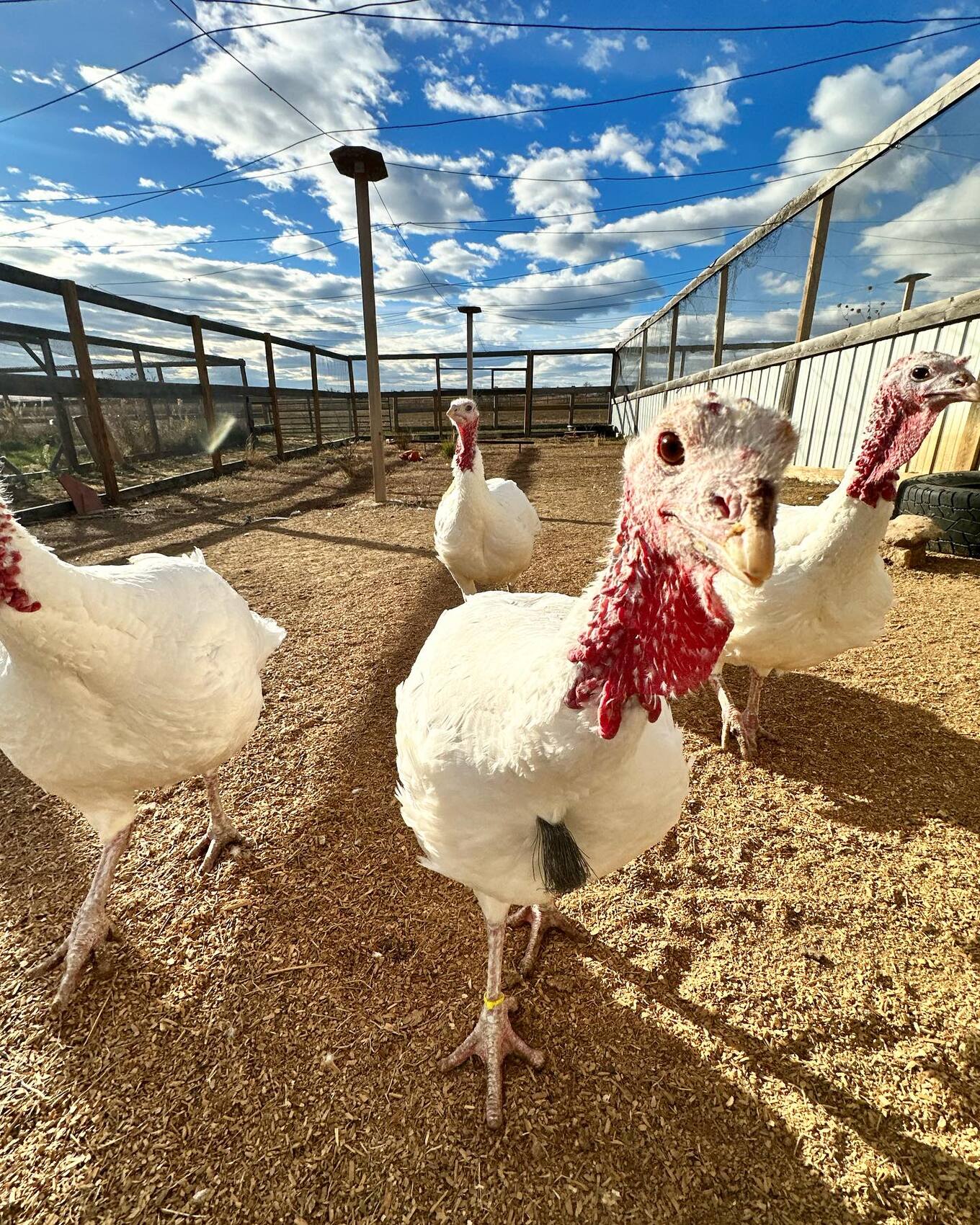 Luvin Arms Animal Sanctuary
Luvin Arms Animal Sanctuary
Luvin Arms Animal Sanctuary and Little Bear Sanctuary in Florida have initiatives such as Giving Tuesday and monthly supporter programs. Iowa Farm Sanctuary also invites people to join them on Patreon.
In lieu of engaging in mass consumerism, animal sponsorships can be a holiday gift with purpose and an easy one to give by donating to CAS, Luvin Arms, Little Bear, and others.
5Volunteer your time
While donations are a big help, staffing shortages mean that volunteers are more important than ever. As these sanctuaries gear up for their toughest winter yet, community support becomes critical.
“There is always the likely potential that general costs of care will increase during colder months, while volunteer participation and donations during this time of year slow down,” McCrystal says. “I’m always worried about winter and this year more than ever.”
With widespread staff cuts, this call for hands-on help is crucial, especially during the winter months when the needs of the animals and the demands of maintaining the sanctuary increase.
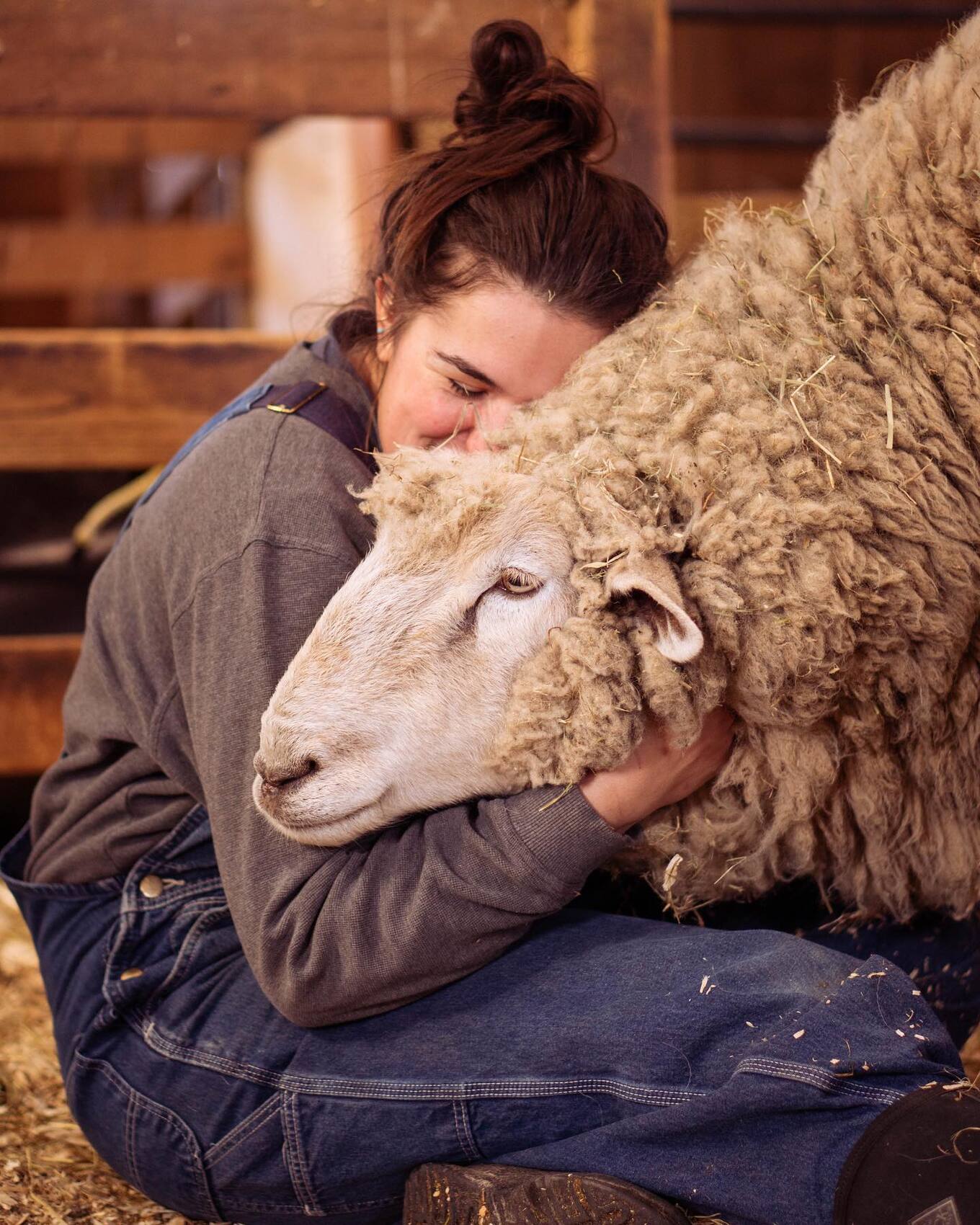 Woodstock Farm Sanctuary
Woodstock Farm Sanctuary
Financial contributions, participating in fundraising campaigns, or offering time as a volunteer can make a significant difference. Each sanctuary, with its unique challenges and needs, relies on generosity and commitment to keep operations going for its animal residents.
Plus, if you’re passionate about veganism, did you know that sanctuary tours are scientifically proven to help people ditch animal products? Stevens hopes to bring back vegan food tours at CAS once she is able to overcome the dire economic situations she and other sanctuary owners find themselves in this year.
Editor’s note: while we interviewed a few sanctuaries for this story, there are many others across the country that are struggling during these difficult times. Check with your local sanctuary for ways you can help.
For more, read:
JUMP TO ... Latest News | Recipes | Guides | Health | Subscribe









